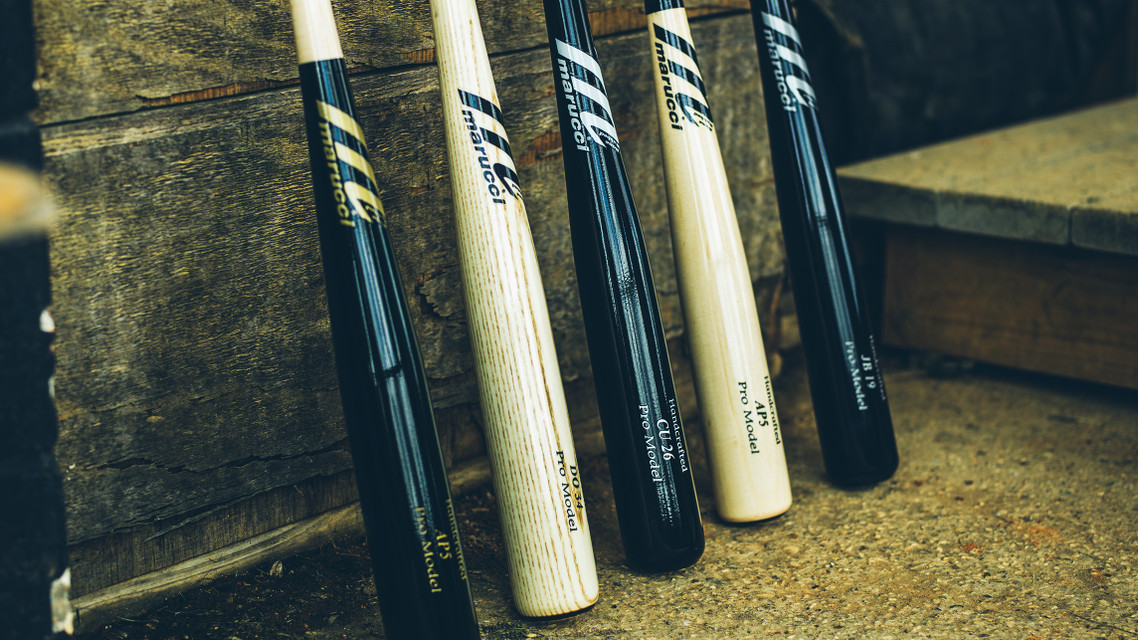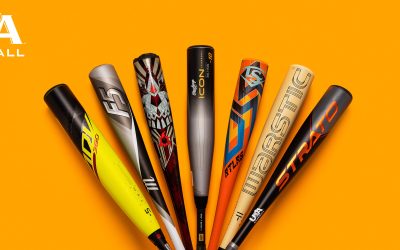The choice between metal and wood bats has long been a subject of passionate debate among baseball players, coaches, and enthusiasts. Each type of bat offers distinct advantages and disadvantages, leading to diverse opinions on which is the superior option. In this article, we will delve into the metal vs. wood bat discussion, examining various aspects such as performance, durability, safety concerns, game strategy, and even the debate’s impact on professional baseball. By shedding light on the pros and cons of both types of bats, we aim to provide a comprehensive understanding that will assist players in making an informed decision when choosing the right bat for their game.
Introduction: Understanding the Debate between Metal vs Wood Bats
Exploring the ongoing controversy
Step onto any baseball field, and you’ll likely stumble upon a heated debate: metal bats versus wood bats. The clash between these two bat materials has been a hot topic for years, with players and fans alike passionately arguing for their favorite choice. But what exactly is the fuss all about? Let’s dive into the metal vs. wood bat debate and uncover the reasons behind the ongoing controversy.
Pros and Cons of Metal Bats
Metal bats, beloved by power hitters and backyard sluggers, certainly pack a punch when it comes to performance. With their lightweight construction and larger sweet spot, metal bats can send balls soaring like fireworks on the Fourth of July. They also have a consistent performance, allowing players to achieve more power and distance with their hits.
However, metal bats come with their fair share of downsides. One of the biggest issues is the “trampoline effect” caused by the bat’s construction, which can lead to faster ball speeds and increased safety concerns for pitchers and infielders. Additionally, the durability of metal bats can be questionable, as they are prone to denting or cracking over time.
Find the best metal bats at JustBats!
Pros and Cons of Wood Bats
Ah, the classic charm of wood bats. These traditional beauties have been the bat of choice for professional players for decades. Wood bats provide a unique feel and sound that many players find satisfying. They also require hitters to have sound technique and precise timing, making each hit feel like a well-earned victory.
However, swinging a wood bat is no walk in the park. They tend to be heavier compared to metal bats, requiring players to put in more effort and strength to generate power. The smaller sweet spot and less forgiving nature of wood bats also means that mishits are more likely to result in weak contact or broken bats.
You can browse the best wood bats at JustBats too!
Performance and Durability: Comparing Metal and Wood Bats
Comparing performance capabilities
When it comes to performance, metal bats often steal the show. The trampoline effect and larger sweet spot provide players with the ability to generate more power and hit the ball farther. This makes metal bats a popular choice for players seeking to boost their offensive numbers. On the other hand, wood bats demand a higher level of skill and precision, rewarding hitters with a true sense of accomplishment when a solid hit is made.
Assessing durability and lifespan
In terms of durability, wood bats reign supreme. While they may break on occasion, they have a longer lifespan and can withstand consistent use. Metal bats, although more resistant to damage initially, are prone to denting and cracking over time, leading to their eventual retirement.
Ultimately, the choice between metal and wood bats boils down to personal preference and the specific needs of the player. While metal bats offer power and consistency, wood bats provide a classic, authentic experience. So, whether you’re a fan of the thunderous crack of a metal bat or the satisfying thud of a wood bat, there’s no denying the excitement and anticipation each brings to the game. Happy swinging!
Safety Concerns and Regulations: Metal vs. Wood Bats
Examining safety issues with metal bats
When it comes to safety, metal bats have both their pros and cons. On one hand, the trampoline effect of metal bats can propel the ball at higher speeds, increasing the risk of injury for players on the field, particularly pitchers and infielders. The ball comes off a metal bat with lightning speed, leaving little time for fielders to react. However, it’s worth noting that advancements in bat technology have led to the creation of bats with more restricted performance to mitigate some of these safety concerns.
Understanding regulations regarding bat materials
Baseball organizations, from Little League to the MLB, have implemented regulations to ensure player safety and maintain a fair playing field. These regulations typically dictate the materials, dimensions, and performance standards for bats. While metal bats are typically allowed in youth leagues, certain restrictions, such as BBCOR (Bat-Ball Coefficient of Restitution) standards, aim to limit their performance. In professional baseball, wood bats remain the standard to preserve the integrity and tradition of the game.
Impact on Game Strategy and Skill Development
Effects on hitting technique and approach
The choice between metal and wood bats can significantly impact a player’s hitting technique and approach. Metal bats tend to have larger sweet spots and offer more forgiveness on mishits, allowing players to generate more power and distance. This can influence a hitter’s swing mechanics, as they may rely more on the bat’s performance rather than focusing on solid contact. On the other hand, wood bats demand a higher level of precision and technique, encouraging players to develop better bat control and hand-eye coordination.
Strategic implications for players and coaches
The choice of bat material can also affect strategic decisions made by players and coaches. With metal bats, the potential for extra-base hits and home runs is higher, altering offensive strategies. Coaches may emphasize power hitting and sacrifice some situational hitting and bunting techniques. Conversely, wood bats promote a more strategic approach, with an emphasis on contact hitting, moving runners, and playing small ball. The choice of bat can influence game plans and the overall style of play.
The Debate in Professional Baseball: Metal vs. Wood Bats
Historical context and evolution of bat usage in the MLB
The use of wood bats has been deeply ingrained in the history of professional baseball, dating back to its origins. Wood bats have long been associated with tradition, craftsmanship, and the essence of the game. However, in the late 20th century, the introduction of metal bats into college and amateur baseball sparked the debate on their potential implementation in the MLB. Despite some experimentation in lower-level professional leagues, wood bats continue to be the standard in Major League Baseball.
Arguments for and against metal bats at the professional level
Supporters of metal bats in professional baseball argue that they would bring more excitement, higher scoring games, and showcase the power of the hitters. Critics, however, believe that metal bats would distort the game’s integrity, making it easier to hit home runs and potentially altering statistics and historical records. Additionally, concerns about player safety and the potential for increased pitcher vulnerability have been raised. Ultimately, the debate remains lively, but for now, wood bats remain the symbol of the pros.
Conclusion: Choosing the Right Bat for Your Game
When it comes to choosing between metal and wood bats, personal preferences and individual playing situations should be taken into account. Metal bats are often preferred for their performance advantages, while wood bats offer a more traditional and authentic baseball experience. Additionally, specific league regulations and guidelines should be considered to ensure compliance and fair play.
At the end of the day, the metal vs. wood bat debate continues to stir discussions among players, coaches, and fans alike. While there are pros and cons to each option, it’s essential to remember that the choice of bat shouldn’t overshadow the beauty and joy of the game itself. Whether you’re swinging a metal or wood bat, the crack of the bat and the thrill of the game remain universal and timeless. So grab the bat that suits your style, step up to the plate, and enjoy the magic of baseball.
Read another fantastic comparison between Metal and Wood bats here and help figure out what the perfect bat for you is.
FAQ
1. Are metal bats more powerful than wood bats?
Metal bats are often associated with increased power due to their trampoline effect, allowing for greater ball exit speed. However, this does not necessarily mean that metal bats are always more powerful than wood bats. Many professional players still prefer the solid and natural feel of wood bats, and with the right technique, they can generate considerable power.
2. Are metal bats safer than wood bats?
Metal bats tend to have a higher rate of batted ball speed and can pose safety concerns, particularly in youth baseball. The increased exit speed can reduce the time for fielders to react, potentially increasing the risk of injuries. Wood bats, on the other hand, have been deemed safer due to their lower exit speeds. However, safety concerns also depend on factors such as pitching speed and player skill.
3. Can metal and wood bats be used interchangeably in all baseball leagues?
The use of metal or wood bats in baseball leagues is typically governed by regulations and guidelines set by the league or organization. While metal bats are commonly allowed in many amateur and youth leagues, professional baseball generally requires the use of wood bats. It is essential to consult the specific rules of your league to ensure compliance.
4. Do metal bats affect the development of proper hitting technique?
Metal bats, with their enhanced performance capabilities, can influence a player’s hitting technique. The trampoline effect of metal bats can mask slight hitting flaws and impair the development of proper swing mechanics. Some argue that using wood bats encourages better technique, as they offer less forgiveness and require more precision. However, both types of bats can be used effectively to develop sound hitting mechanics with proper coaching and practice.




